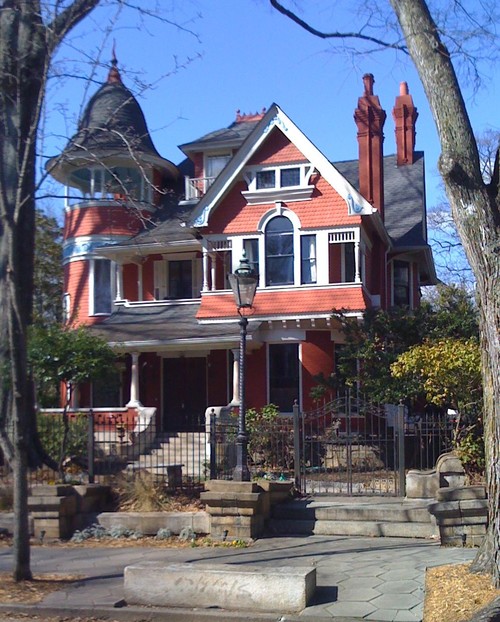Many of the great old neighborhoods we cherish are now illegal to build, according to zoning and land use codes imposed in the last 75 years. While we may not want obnoxious uses next to our homes, our massive municipal regulations go far beyond that and mandate over-accommodation of cars to the extent of excluding and even prohibiting other forms of transport. Some of this resulted from car makers lobbying governments to mandate certain taxes, uses, and configurations that were friendlier to automobiles than to others. This opened up huge sections of land for the middle class, but it distorted markets for transport and for real estate. Now, many recognize the desirability of varied transportation and community configurations but must overcome a regulatory morass to build them. Here's a story of one such development in the middle of Atlanta.
This approach encompasses small towns, mid-sized cities & towns, and the cores of large metropolitan regions. Here is the website of the producers of this short video. They seek funding to continue documenting this trend.
http://www.americanmakeover.tv
Saturday, May 8, 2010
Tuesday, April 27, 2010
Here We Go Round the Mulberry Bush the Mulberry Bush the Mulberry Bush!
So early in the morning: Perhaps not art, nor culture, per se, but the mulberry is certainly germane to the cultural evolution of the southern US, from the failed colonial silkworm cultivation efforts onward. It grows wild in many a Southern yard, often considered a trash tree and removed, but is a source of delectable fruit and nutritious leaves & stems. I have beaten the birds to a few to my delight.
Monday, April 5, 2010
Movie of San Francisco Trolley run before 1906 Quake
Seven or so minutes of silver screen reminiscence with a melancholy instrumental:
Headed towards the Ferry Building along Market Street. On the eve of their pride, you might say — not long after, San Francisco would be devastated by the infamous 1906 earthquake, killing thousands.
Alternate source: http://www.archive.org/details/TripDown1905
Tip of the hat to Charles Nelson for this.
Saturday, March 20, 2010
Industry Inspires Lighting Fixture Designs

For a few decades now, architects and designers have gone to industrial suppliers such as Granger to specify lighting fixtures that had an "industrial" look or feel, often with raw galvanized finishes, mill finishes, exposed connectors and other details seen as "honest" expressions of functionality. With the public's growing appreciation of this appearance, several manufacturers now produce somewhat more polished pieces that utilize many of these components while fitting into residential settings where close proximity of the viewer would otherwise reveal some of the industrial fixtures' rough edges. A recent article in Old House Journal illustrated many of these fixtures and their sources. Adding small details like lighting fixtures is a comparatively low-cost way to re-invigorate a space without massive remodeling. Here are some links to sources (some from OHJ article + mine):
http://www.rejuvenation.com/collections
http://www.countrygearltd.com/
http://www.wilmettelighting.com
http://www.pwvintagelighting.com/
http://www.b4itwascool.com/
http://www.urbanremainschicago.com/
http://getbackinc.com/
http://www.conantmetalandlight.com/
Thursday, March 18, 2010
Not just any Lavatory — Read it as a New Form
Thursday, March 11, 2010
A gracious Gothic Revival in Brookhaven
Monday, March 8, 2010
Victorian Homes ideabook on houzz.com
Sunday, February 14, 2010
Friday, December 18, 2009
Friday, December 11, 2009
Amory Lovins: prophet of efficiency
There was a time when resources were plentiful, and people scarce. Check out this Video:
http://video.popularmechanics.com/services/player/bcpid1213908606?bctid=1233423657
http://video.popularmechanics.com/services/player/bcpid1213908606?bctid=1233423657
Monday, November 30, 2009
Friday, November 13, 2009
Friday, October 23, 2009
Thursday, October 8, 2009
James Wines — Drawing and Architecture —Blueprint Magazine, Sept 30, 2009
Subscribe to:
Posts (Atom)




